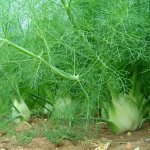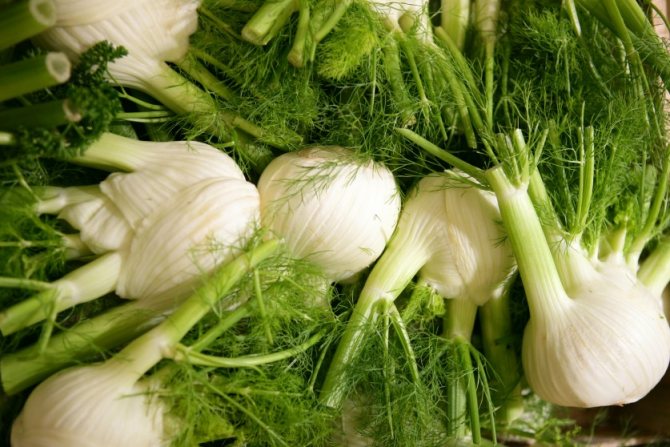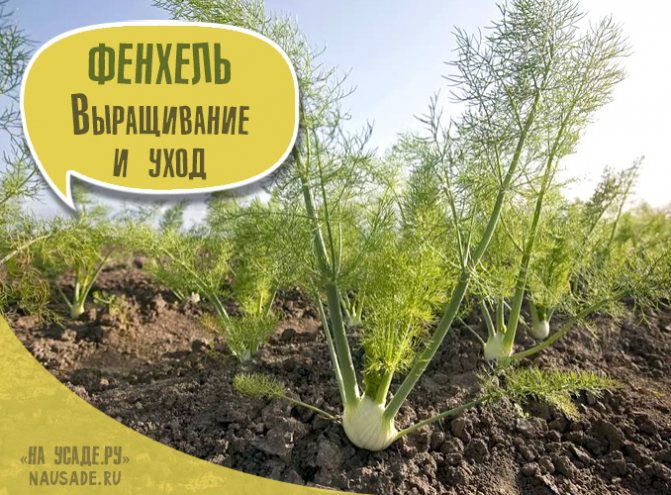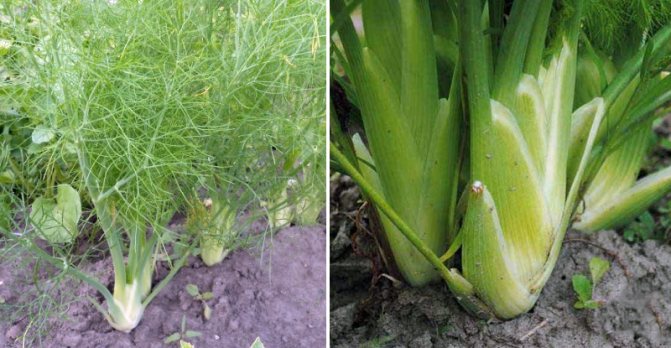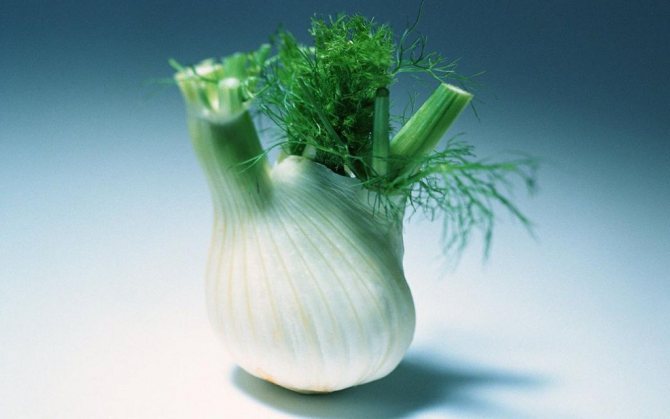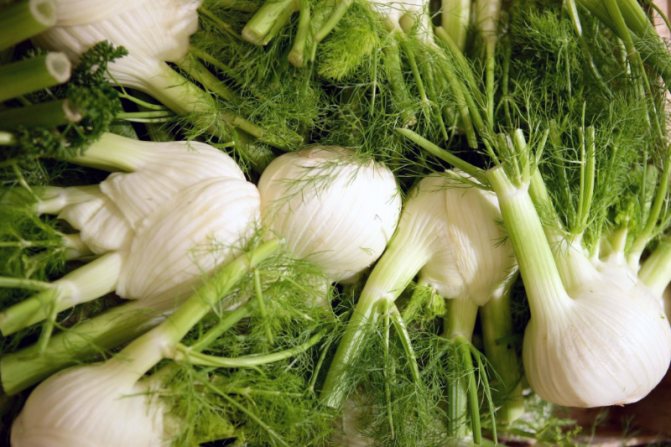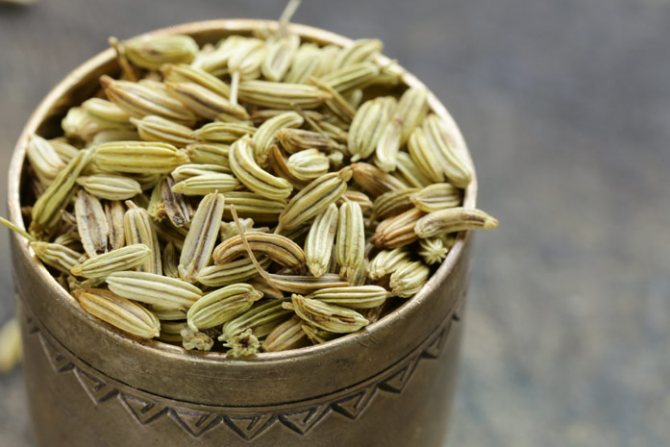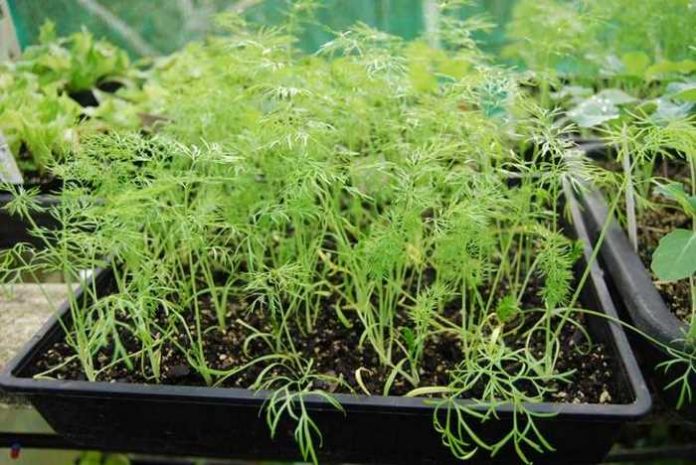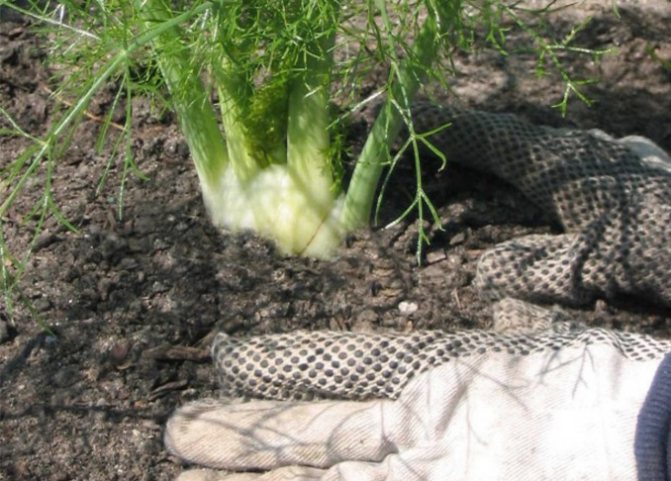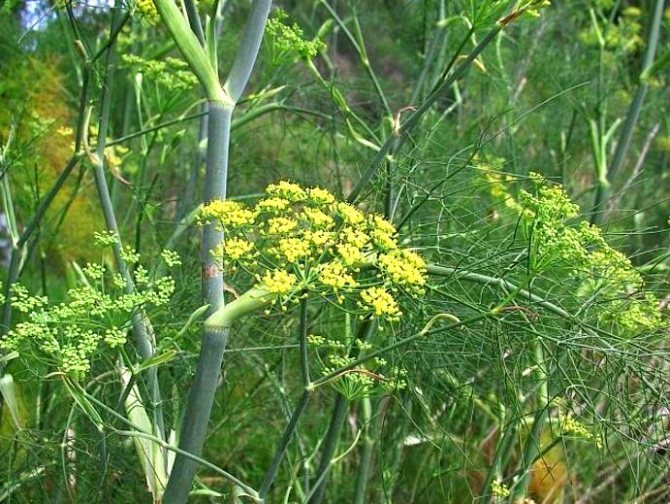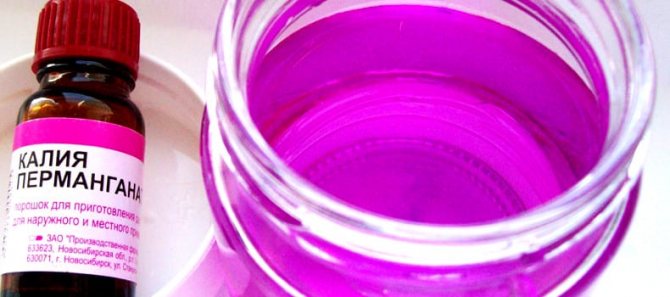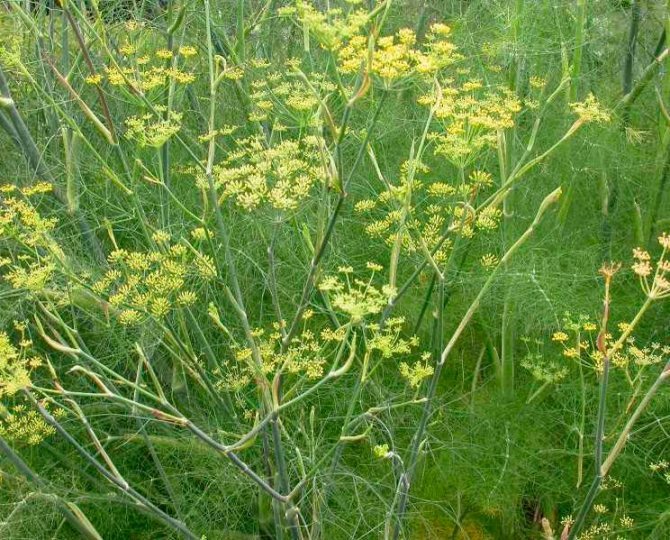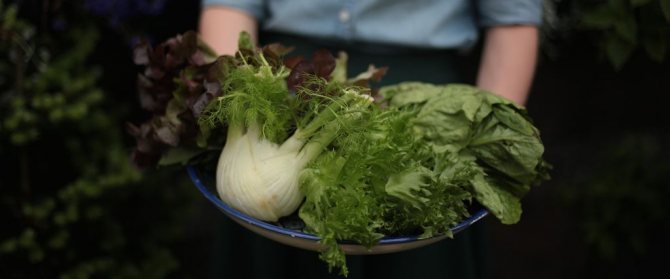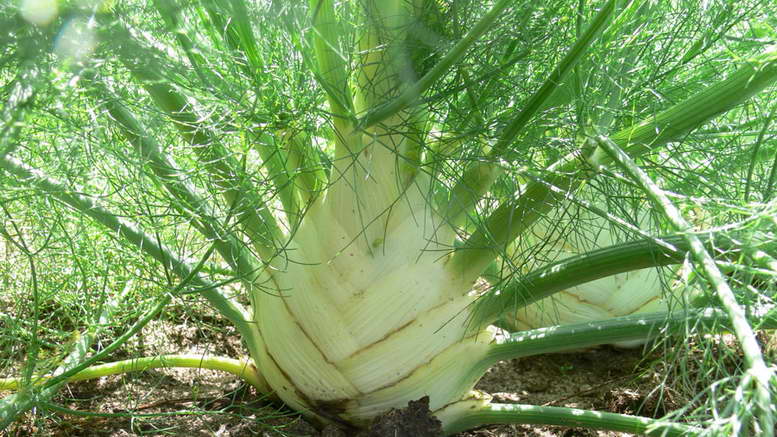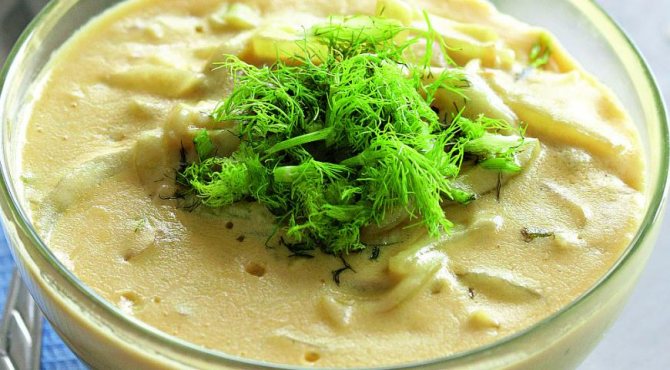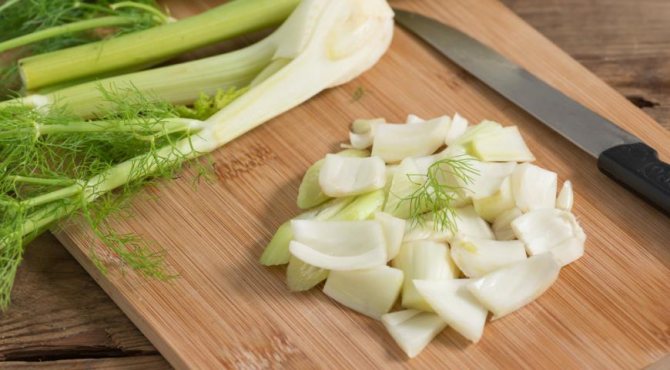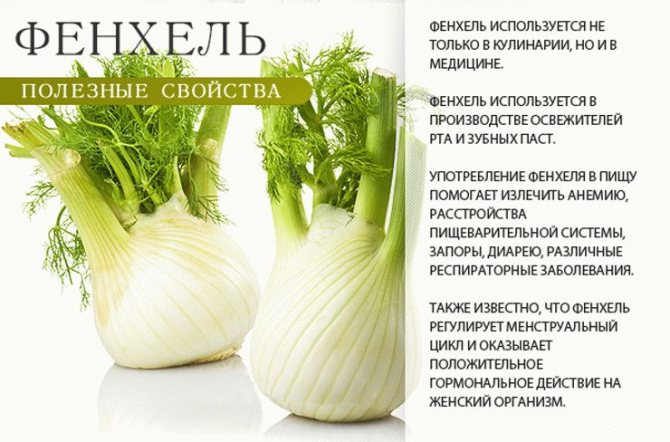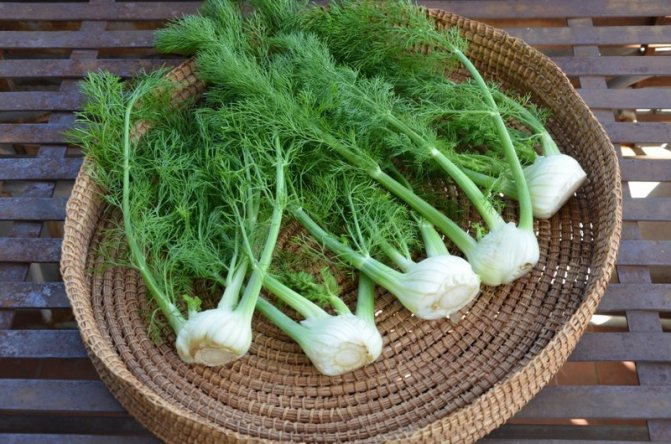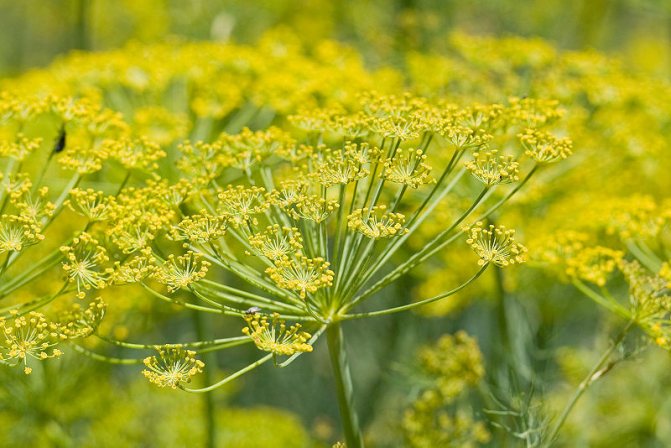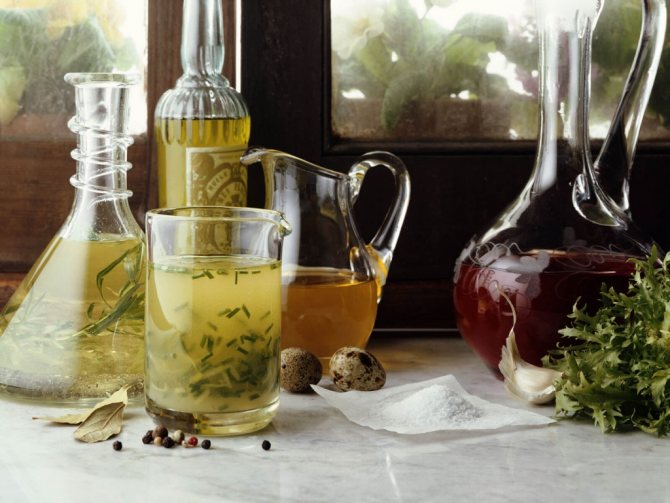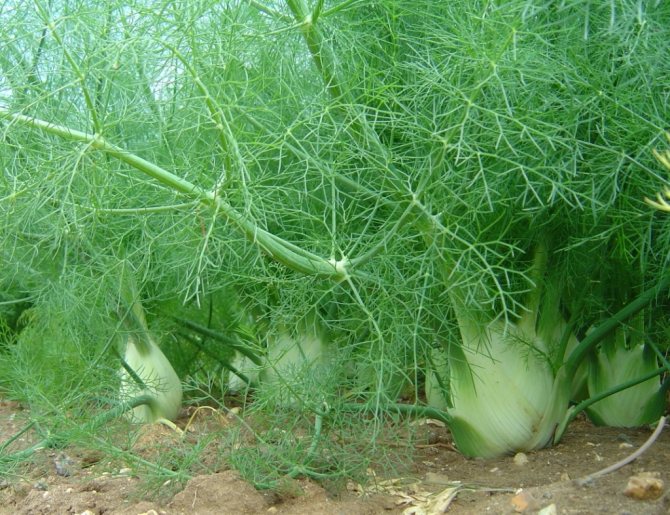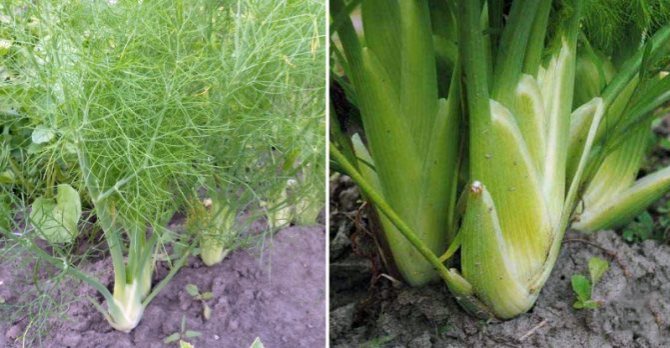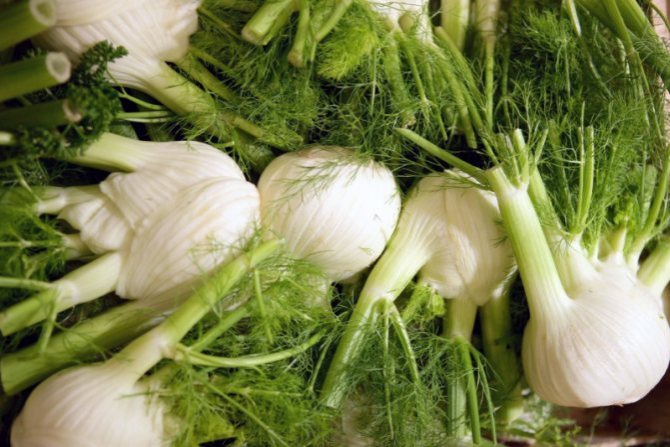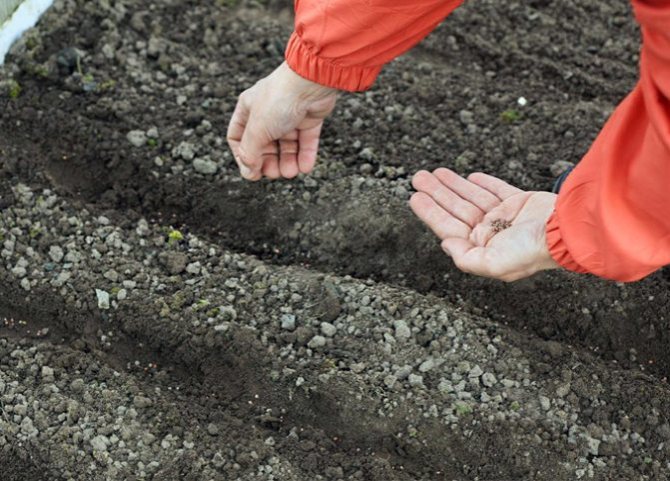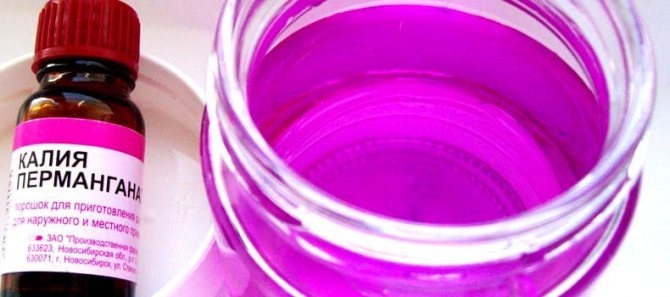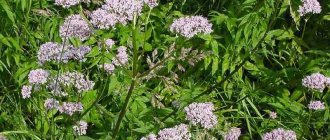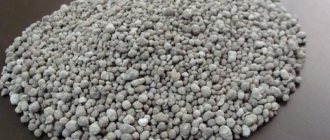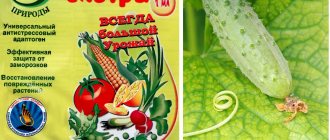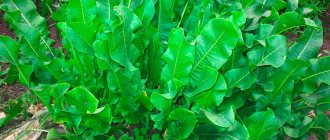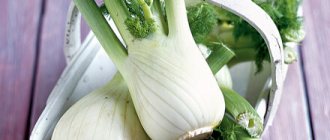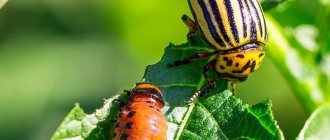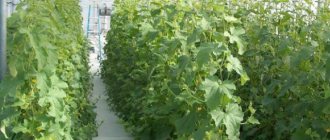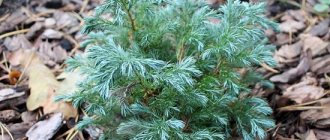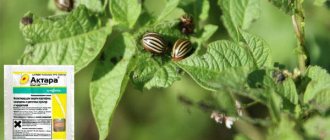The name "fennel" is known to many, but not everyone knows enough about this plant to start planting in their garden plots. Common fennel (Latin Foenículum vulgáre) is a fragrant plant that is widely used in medicine and as an additive to a number of dishes. Outwardly, the plant is somewhat reminiscent of dill. If you have a summer cottage, it will not be difficult to grow this crop. The most important thing is to clarify for yourself before planting what kind of culture it is, how it should look, and how it is grown.
A useful product is strongly recommended to be planted away from other plants. The culture loves high humidity. If watering is insufficient, it will reach with its roots to the beds with other plants, and the latter will inevitably suffer. The only neighbor that fennel accepts is the cabbage cucumber. This plant has a beneficial effect on him, scaring off some pests with its smell.
On a note. Planting fennel is recommended in sunny areas. The culture is very fond of light and grows poorly in the shade.
There are two main varieties of fennel:
- vegetable;
- ordinary.
Fennel is not the most popular, but very useful plant.
The main feature of vegetable-type fennel is the formation of special bulbs that are edible. It is grown as an annual plant. Casanova and Rondo are among the most popular varieties of this type of culture.
As for fennel ordinary, it is grown for seeds and herbs. It is left to grow for another year in order to be able to wait until the seeds are fully ripe. Among the popular varieties, Ogorodny and Perechny can be named.
Origin and description of culture
Fennel is a herbaceous plant of the Umbrella family. In its natural environment, it grows in southern Europe, Asia Minor and the Mediterranean. The greens of the culture, similar to dill, have a pleasant aroma. She has a sweet taste reminiscent of anise. Thanks to this, the plant is used in cooking.
It is customary to divide culture into two types:
- Ordinary fennel, or pharmacy. This variety is grown for grass and seeds.
- Vegetable fennel. It is prized for its fleshy stem, called a head of cabbage.
The plant reaches a height of 1.5-2 meters. It has a powerful rhizome and a branched stem. Green leaves are divided into filamentous fibers. Small peduncles are collected in baskets. After them, oblong, grayish fruits with a soft, pleasant smell are formed.
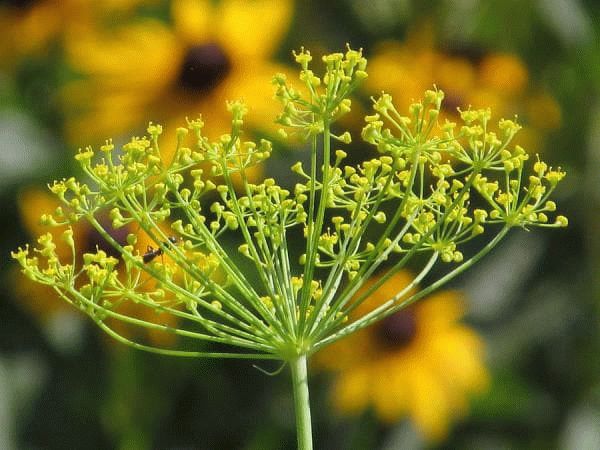
Contraindications
Fennel fruit can cause allergic reactions, if consumed in large quantities, start with small portions to control the condition.


Some people are allergic to fennel, so don't take too much of it.
Remember the laxative properties of the plant, it also thins the blood. It is not recommended to take fennel medications for heart rhythm problems, heavy menstruation, or in the postoperative period.
Useful properties and application
Fennel is a healthy vegetable that is used to treat many diseases.It contains flavonoids, essential oils, vitamins, fiber and vegetable protein. Thanks to this, the plant has healing properties:
- relieves cough;
- improves the functioning of the gastrointestinal tract;
- relieves headache;
- improves vision, treats conjunctivitis;
- protects the liver;
- boosts immunity.
The plant sap contains a lot of antioxidants and anethole - a substance that prevents the development of cancer cells. Therefore, the vegetable is recommended to be consumed for the prevention of cancer. The roots are used as a laxative, the seeds are used as stimulants.
In nutrition
The culture has a pleasant aroma and taste, it is widely used in cooking. The leaves, stems, inflorescences and seeds of the plant are edible. They are added to dressings, sauces, salads, soups, used as a seasoning for meat and fish dishes.
Heads of vegetable fennel are eaten raw, baked, fried, stewed. The seeds are used ground or whole. They are used to flavor preserves and pickles. Medicinal tea is brewed from the leaves.
In medicine
On its basis, teas and decoctions are made to help young children with bloating and gas. Essential oils are added to antispasmodics. Infusions and decoctions help with bronchitis and whooping cough. The culture is known for its antibacterial and antifungal properties.
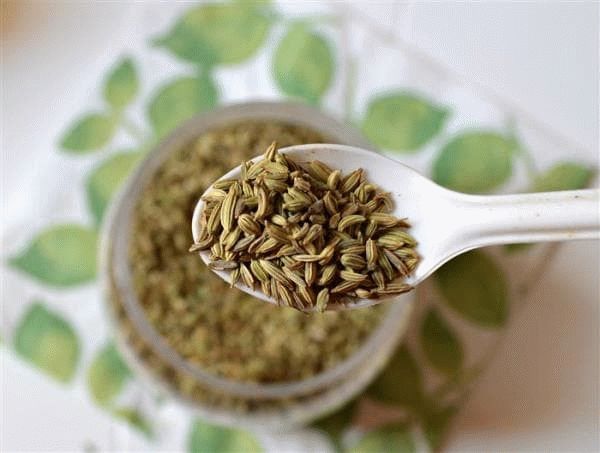

For kids
Fennel tea is good for little kids too. It is allowed to give it from four months. Such gulls help to relieve the baby of intestinal colic and flatulence, helps to strengthen the nervous system and increase immunity. Fennel contains calcium, so this product has a positive effect on the skeletal system of babies. To prepare a drink, you need to purchase fennel seeds at the pharmacy, pour two teaspoons into a small saucepan and pour a glass of boiling water. Boil over low heat for a few minutes. Children are given the drug no more than six times a day, one tablespoon.
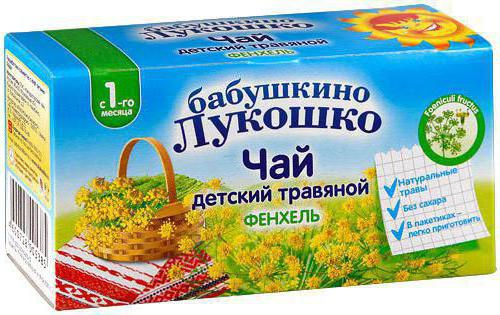

Varietal variety
Many varieties of vegetables have been bred by breeders. Russian gardeners grow the following varieties of fennel:
- Luzhnikovsky Semko. Mid-season vegetable variety, ripening 55-60 days after planting.
- Utter. Early maturing head of cabbage, ripening in 47-50 days.
- Rudy F Mid-season hybrid, ripening 60 days.
- Pepper. Common variety with unsuitable roots.
- Garden. Greenery variety.
It is recommended to grow vegetable fennel in a seedling way, then the chance to collect large fruits-heads of cabbage increases.
Growing from seeds
When planting and nursing outdoors, you should decide on the type of fennel. Pharmacy or common varieties are used to obtain juicy greens and seeds. They can be sown directly into open ground. When planting in spring, it is advisable to cover the garden bed with polyethylene after watering to protect the plants from frost. After the onset of warmth, you can sow pharmacy fennel at intervals of 2-3 weeks until early August.
It is advisable to grow vegetable varieties in seedlings. Plants do not tolerate transplanting well, so it is advisable to germinate the seeds in peat pots or cassettes filled with humus. In 45-50 days after the emergence of seedlings, the seedlings are planted in a permanent place.
Sowing time in open ground
The time to plant a crop depends on the variety of plant. Pharmacy varieties are immediately sown in open ground. The event can be held in the spring, in mid-April, or in the fall - in the first decade of September. It is advisable to grow vegetable varieties using the seedling method. In this case, sowing is carried out in mid-March.
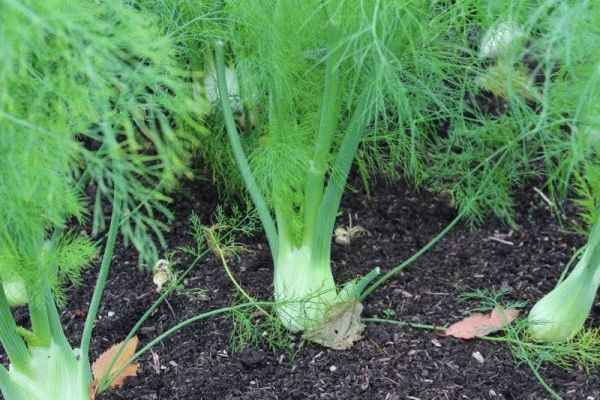

Garden bed preparation
You can sow seeds in spring and autumn, but in any case, prepare the site in advance.If you plan to plant before winter, you should start work 2-3 weeks before the event. With spring sowing, the bed is prepared in the fall. To do this, for each square meter, the following is entered:
- a bucket of humus or peat;
- 2 tbsp. l. nitroammophosphate;
- 0.5 l of slaked lime;
- 2 liters of sawdust.
Digging the soil is carried out, and the earth should be loosened to a depth of 25 cm. The surface is leveled. In the spring, a month before planting, the site is watered and covered with a film so that the soil absorbs and retains water.
Features of outdoor care
Growing and caring for fennel is a simple process that even an inexperienced gardener can handle. The main thing is to provide the culture with regular, abundant watering, weeding and loosening. Mulching will help to avoid problems with leaving. Thanks to this agrotechnical measure, moisture is retained at the roots, and the plant needs less watering. In addition, mulch prevents weeds from growing, which reduces weeding and loosening.
The plant will need periodic hilling, which provides air access to the heads of cabbage. It is recommended to carry out the procedure 2-3 times per season. The crop should be hilled to a height of 3–7 cm. Instead of this procedure, you can make a protective ring for the plant from a cut plastic bottle. Then the heads of cabbage will not get dirty with soil.
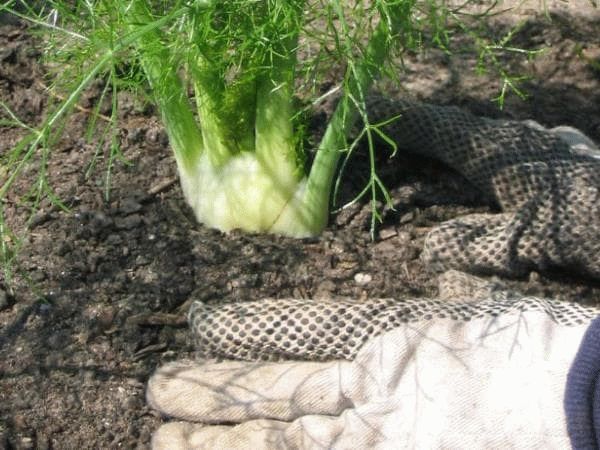

Irrigation and loosening
Fennel is a moisture-loving culture. Growing large vegetable roots requires regular watering. It is recommended to pour 15–20 liters of water every 5–6 days per square meter of the bed. During drought, moisture increases. After watering and rainfall, the beds must be constantly loosened, otherwise a crust forms on the soil, blocking the access of air to the roots. This will have a bad effect on the development of heads of cabbage.
Top dressing
It is recommended to apply fertilizers several times per season:
- The first feeding is carried out when 4 leaves appear. As fertilizer, a mullein solution is used, prepared at the rate of 1 kg of manure per 10 liters of water.
- The second - when arrows appear on ordinary varieties.
- Cabbage varieties are fertilized 30 days after the first solution is added.
Diseases and pests
Fennel, grown in the country, occasionally gets sick with gray rot. This disease attacks the plant in cold and rainy summers. For treatment, fungicides are used. The culture has a strong odor that repels pests, but sometimes carrot or caraway aphids grow on it. An insecticide will help get rid of insects.
Fennel pests and diseases with photos and names
Fennel diseases
Fennel has a fairly high resistance to disease, but still sometimes it suffers from stem or root rot, cercospora or rust.
Cercosporosis
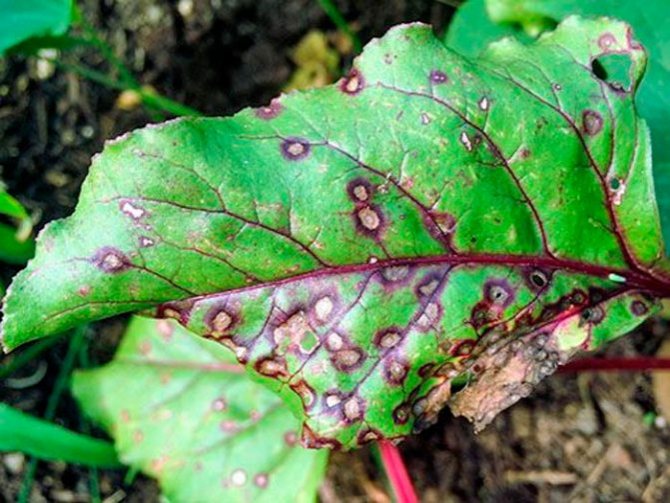

If the bush is sick with cercosporosis, angular small specks of yellow color are formed on all its green parts. Over time, the color of the spots becomes darker, they merge with each other. The affected parts of the bush turn yellow and then die off. For the purpose of prevention, crops should not be allowed to thicken. The affected bushes should be sprayed with a solution of Bordeaux mixture (1%), Kaptan or Kuprozan.
Root rot
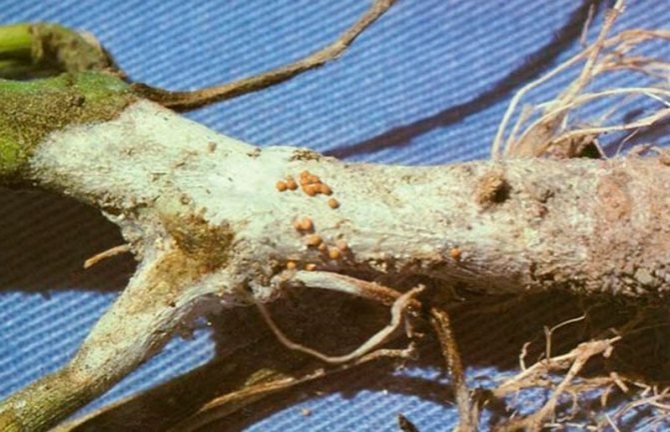

Root rot kills fennel. At first, foliage wilting is observed, and then it withers, becomes brown and dies off. If you dig a hole 15 centimeters deep near the bush, you can find the blackened roots. The affected plant must be dug up and removed from the site along with the soil that is adjacent to the roots. If the disease was detected at the initial stage of development, it is recommended to stop watering the fennel, and also spray it with a solution of a fungicidal drug.
Stem rot
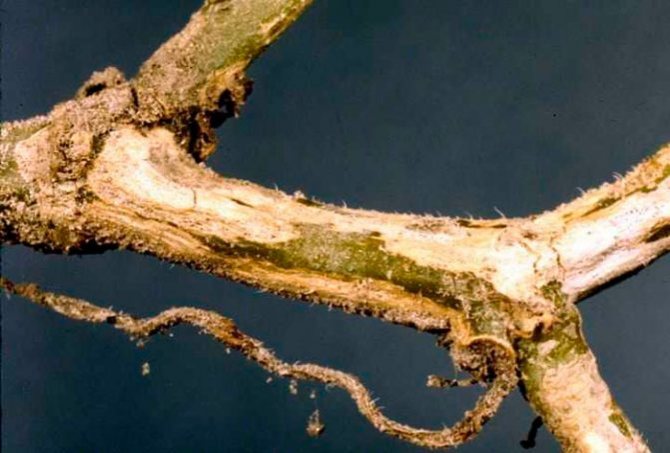

In plants affected by stem rot, shoots and stems are damaged. In the beginning, part of the stem or shoot decays, after which it dies off.In some cases, foliage is also affected. As a rule, the plant rots at the level of the soil surface, and also above, while the first symptom of the disease is the appearance of a white bloom, then small brown spots form on the surface of the stem. After the signs of this disease are found on the bush, you need to stop watering it, then you need to remove the plaque, and coat the affected areas with a strong solution of potassium manganese, after which the plants are powdered with wood ash.
Rust
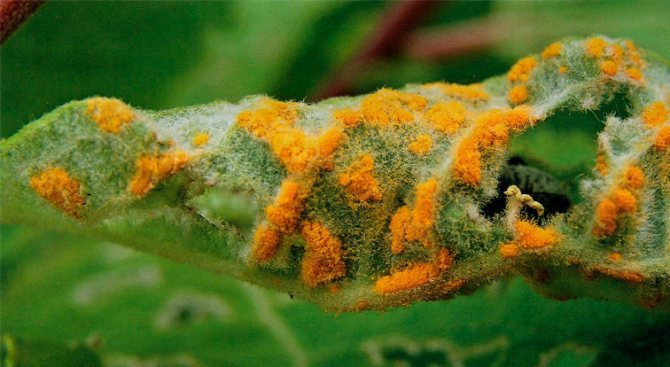

If the bush is affected by rust, which is a fungal disease, then brownish-orange tubercles appear on its aerial parts, as well as pustules, which cause increased evaporation of moisture. If the plant is very badly affected, then the foliage begins to fly around it. As soon as the first symptoms of the disease are noticed, it is necessary to cut off all the affected stems and foliage, then the fennel is sprayed with a solution of the fungicidal preparation.
Fennel pests
Fennel has the ability to scare off various pests, but it must be borne in mind that many crops cannot get along with it. For example, aphids, fleas, snails and wood lice never settle on it, so it is recommended to place a bed with such a plant next to vegetable crops, which often suffer from them. But this is only if these crops can get along next to fennel. However, the larvae of the May beetle, meadow moths, wireworms, and also the caterpillars of the scoop can still harm him.
Meadow moth
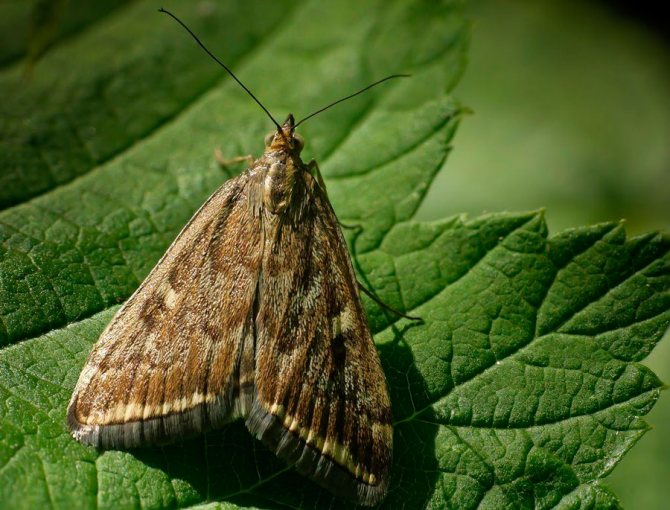

The meadow moth is a polyphagous harmful insect that can greatly harm the garden. In length, such a butterfly reaches 10 mm, in females, the wingspan is about 26 centimeters, and in males - up to 20 centimeters. The color of the forewings is brownish-gray with dark spots; there is a yellow stripe at the outer edge. The hindwings are gray with 2 stripes. The black-headed caterpillar of such a moth has a gray-green color, while a dark stripe runs along the back. This pest is distinguished by its fertility, therefore it is very dangerous for cultivated plants. Caterpillars eat everything that comes their way, leaving only petioles and veins from the foliage. The butterflies themselves eat nectar; therefore, during the years of mass summer of meadow moths, there is often a noticeable reduction in the amount of honey that is produced in this area. This happens once every 8-10 years, at this time gardeners and gardeners have to try hard to preserve the harvest. Various methods are used to kill moths. If there are relatively few pests on the site, then they can be collected manually, while it must be borne in mind that the more weeds on the site, the higher the likelihood that moths will settle on it. If there are a lot of harmful insects, then chemical preparations must be used to destroy them, while Metaphos, Decis, Fufanon, Phosphamide and Karbofos are the most effective.
Winter scoops
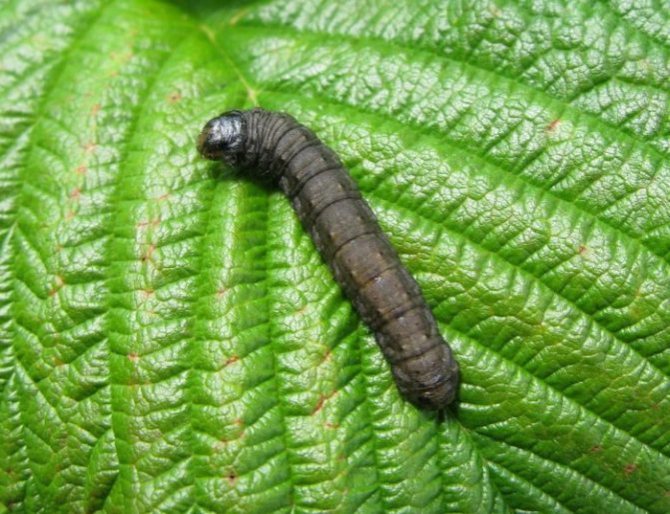

Winter moths are also a polyphagous harmful insect that is very widespread. The color of the front wings is dark gray, almost black, while they have 3 stripes of an even darker shade, and there is also a thin black border. In the female, the hind wings are light brown, and in the male, white. The caterpillars of such an insect are painted in an earthy gray color, while at a later stage of development, a dark stripe forms on their back. This culture can be harmed by the butterflies themselves and their caterpillars, which are very voracious. For the purpose of prevention, you need to adhere to the rules of fennel agricultural technology, and also systematically carry out weeding. If there are a lot of scoops on the site, then treatment with an insecticidal preparation will be required, which is used to combat the meadow moth (see above).
Harvesting and storage
You can remove the greens when the plant reaches 30 cm. It is advisable not to cut off all the leaves at once - this will harm. The last collection of pharmaceutical varieties is carried out before the onset of frost. Heads of vegetable varieties are harvested after they reach 7-10 cm in diameter. This happens in late August - early September. It is not recommended to overexpose the bulbs in the soil, otherwise they will have a bitter taste.
The seeds of the plant are harvested when the flower stalks turn brown. After collecting and drying, they retain their culinary qualities for 6 months, and germination - up to 2-3 years.
Fennel quickly loses its taste and aroma, so it is advisable to use onions and herbs immediately for food. Storage of heads of cabbage in the freezer is allowed. Here they do not lose their properties for 2-3 months.
How to care for fennel
Caring for him is simple and not burdensome.
- All aisles are loosened three times for the entire season.
- Weeds are weeded as they grow.
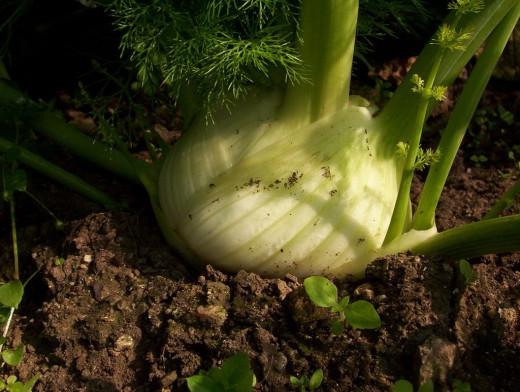

Fennel needs to be loosened and weeded - During the summer season, an average of 4 waterings will be needed (on light soils - more), abundant, at least 20 liters per meter. If there is a lack of moisture, the vegetable variety will go into the stem, or the resulting head of cabbage will be of poor quality.
- After four leaves, top dressing is given. The second is carried out when flowering stems begin to form - for seed varieties, and a month after the first - for head varieties.
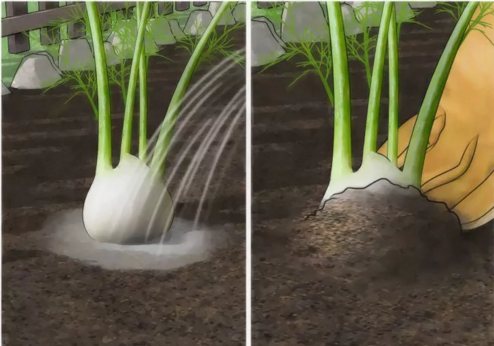

Take care of fennel
Harvesting of food greens occurs when the bushes reach 30 cm (for later sown fennel, it is important to remove the greens before the onset of frost).
Heads of cabbage can be harvested when their diameter is 10 cm (cut at the root, 20 cm of petioles with leaves are left on them).
The seeds are removed as they ripen, which is uneven. To avoid self-seeding, the umbrella with seeds can be wrapped with a light gauze cloth. The best seeds ripen on the central part of the umbrella, so you can selectively harvest these parts first and then collect the rest. At the final cut, the stems, connected by sheaves, are sent for ripening.


Harvesting fennel
Wintering
Only the southern winter can safely transfer fennel. In medium-climatic regions, it is necessary to spud the plants before wintering, cover them well with peat or manure, and cover them with straw. At the first snowfall, cover the place where the fennel grows with snow.
It is a good idea to overwinter fennel in a stationary greenhouse that is not harvested for the winter. He also needs to be covered.
Pests and diseases
The aromatic relative of dill has a lot of pests. Even the harmless and good-natured May beetle, which gnaws at the plants, is dangerous for young seedlings.
- Fennel greens are eaten by thrips, aphids and bedbugs, the umbrella is especially zealous.
- Butterfly scoops and caterpillars also love to feast on young fennel.
- Moli - carrot and caraway moths, as well as the umbrella moth, will not pass by the mouth-watering bushes.
- Of the diseases, the most intractable and harmful are cercosporosis and phomosis. The first is transmitted by seeds, the second by pathogens in the soil.


Pests and diseases
Control measures do not differ from those that apply to dill.
Important! It must be remembered that when growing on greens, it is unacceptable to expose plants to chemicals.
Garden varieties and seeds can be treated with appropriate preparations that will help cope with the problem at an early stage of the growing season.
It is best to protect fennel from pests and diseases by proper agricultural technology, harvesting plant residues, and timely harvesting.
Seeds should be used for sowing only healthy, disinfected treated. New plantings of fennel, even of different varieties, should not be placed next to or in place of old ones for at least three years.
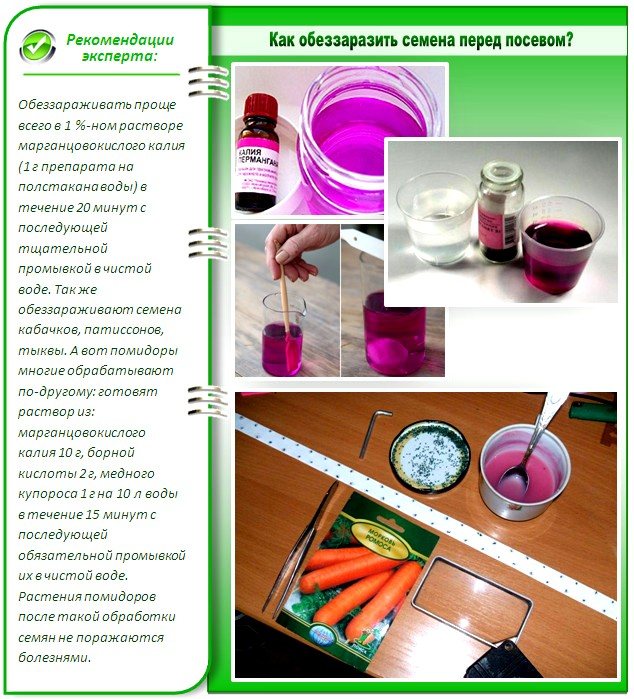

Disinfection of seeds
If you already want to grow this plant, due to its usefulness, originality and popularity, but the taste and smell of greens still does not seem attractive, there is a little trick that will help you fall in love with fennel and understand its value. Before winter comes, dig in some younger plants uprooted in a greenhouse or greenhouse. When the real winter comes, visit the greenhouse and cut the greens. Its aroma and taste will seem so sweet and fresh to you that you will certainly fall in love with fennel and will be happy to grow it along with the usual dill.


Fennel in landscape design

